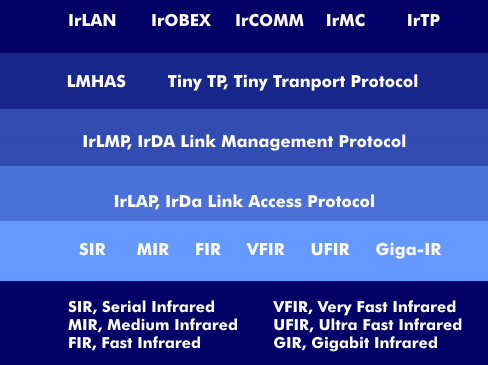IrDA physical layer (IrPHY)
IrDA Physical Layer (IrPHY) is the physical layer of the IrDA layer model. It provides the infrared interface over which the bidirectional, serial transmission takes place. The IrPHY interface defines the signal parameters, the coding method, the light power, etc. and ensures a secure connection between transmitter and receiver.
The bridgeable distance of the IrDA bit transmission layer reaches up to 3 m, with perfect transmission guaranteed at up to one meter. The beam angle is specified at 30 degrees.
The physical implementation of the IrPHY layer determines the bridgeable distance and the data transmission ratedepending on the beam angle and modulation. The wavelengths used are between 850 nm and 900 nm. The version with the lowest data rate is Serial Infrared( SIR), which achieves data rates between 9.6 kbit/s and 115.2 kbit/s at a beam angle of 30 degrees. Medium Infrared( MIR) Medium Infrared has moderate data rates between 0. 576 Mbit/s and 1.152 Mbit/s.
The next fastest versions are Fast Infrared( FIR) at 4 Mbit/s and Very Fast Infrared( VFIR) at 16 Mbit/s. After that Ultra Fast Infrared( UFIR) with 96 Mbit/s and Giga Infrared( GIR) with 512 Mbit/s and 1 Gbit/s were developed. CRC procedures ensure protection of the transmitted data packets. Depending on the data transmission rates, the Cyclic Redundancy Checksum (CRC) works with 16, 32 or even 64 bits.

